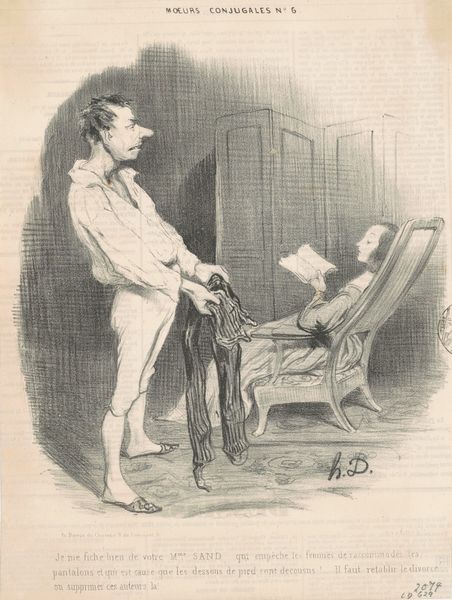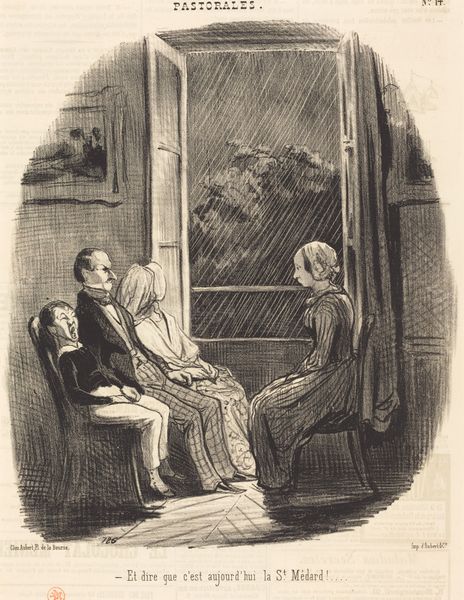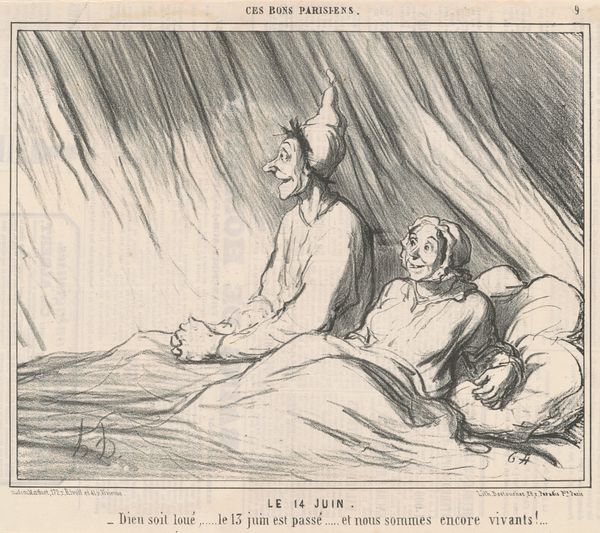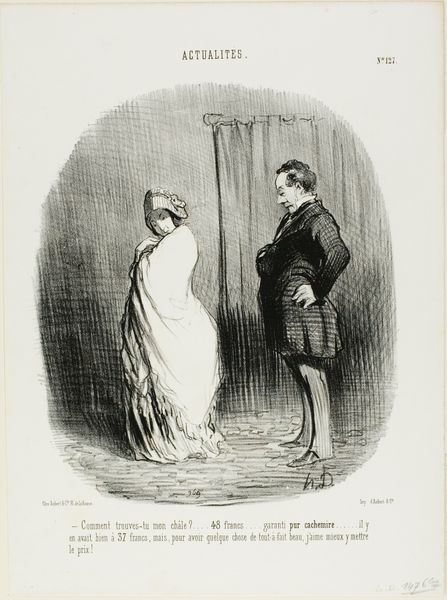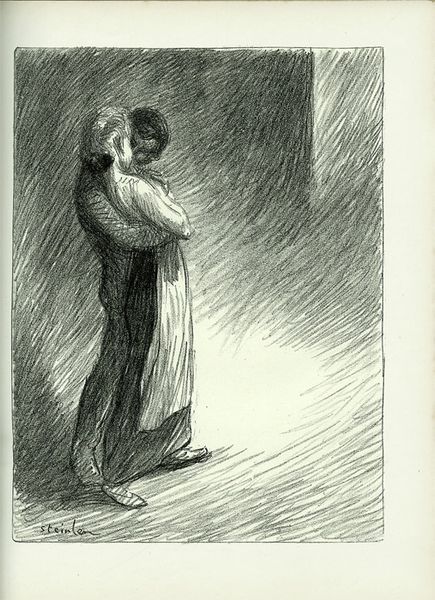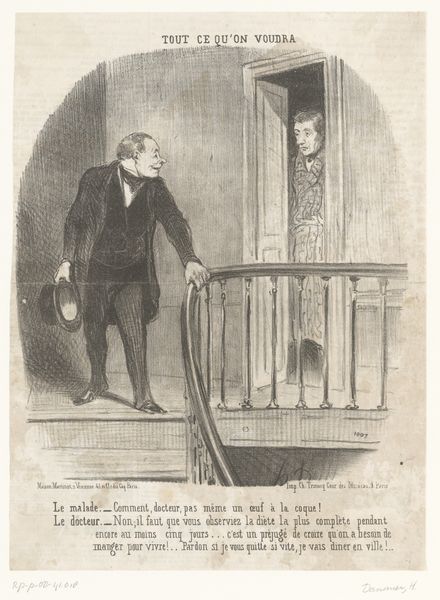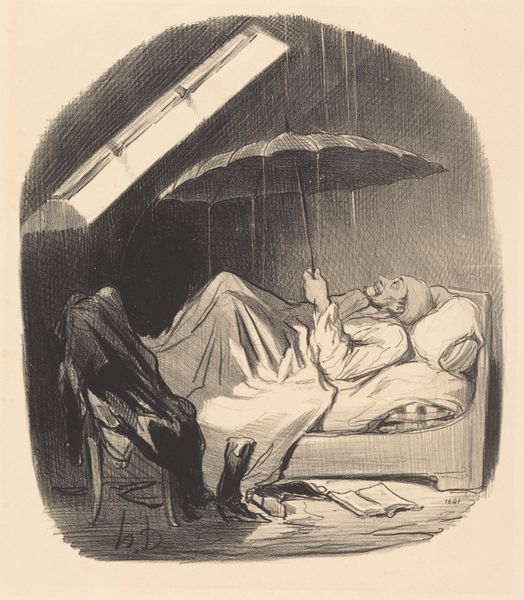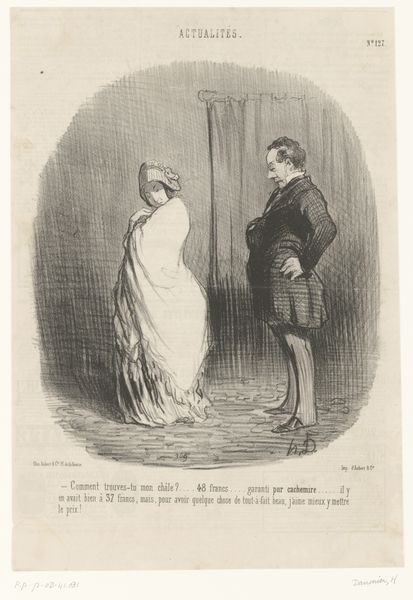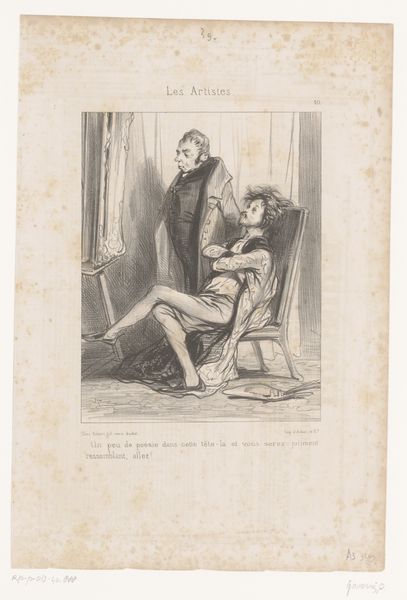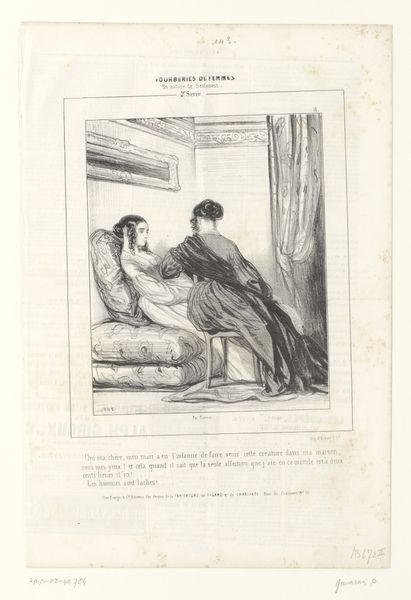
lithograph, print
#
lithograph
# print
#
caricature
#
romanticism
#
genre-painting
Copyright: National Gallery of Art: CC0 1.0
Curator: Looking at Honoré Daumier's lithograph, "Madame...Nous voici...au quinze Novembre," dating to the 19th century, I am immediately struck by the artist’s sharp commentary on bourgeois life. What are your initial impressions? Editor: My first thought goes to the downpour outside the window—it overwhelms everything. I sense claustrophobia and an underlying tension within the domestic space. The graphic quality of the rain almost feels like imprisonment. Curator: Daumier was masterful in using lithography to dissect French society. Consider the title: "Madame, here we are on the fifteenth of November, the weather is starting to spoil." It seems a simple statement, yet it carries so much weight, encapsulating ennui and class dissatisfaction. The gentleman says, "Monsieur. That is my opinion too". It could have class commentary about intellectuals with the over the top face, combined with a kind of shared boredom that only the leisure class of that time could appreciate. Editor: Absolutely. It is important to remember Daumier was working during a time of massive political and social upheaval in France. Caricature became a potent tool for critiquing power structures. Daumier routinely mocked the pretensions of the wealthy. Notice how he exaggerates the man's features – the elongated face, almost grotesque. Curator: The face! Yes! His features certainly border on caricature, don't they? In terms of symbolic resonance, this exaggerated portrayal speaks to more than just physical appearance. It serves as a visual shorthand for intellectual vanity. It underscores how social constructs were experienced—felt—through the very faces and bodies occupying those spaces. There’s something deeply unsettling about his distorted face, like a mask revealing inner turmoil or absurdity. Editor: I find it telling how the woman is presented as almost limp in her chair, turned away from her companion. Could this signal a larger dissatisfaction, reflecting not just her immediate environment, but the political climate and a pervasive cultural ennui as well? How were women portrayed as objects instead of people, how was their suffering caricaturized like his face, their pains not registering like the outside? Curator: Perhaps. We have to appreciate the lithograph medium itself. Its accessibility made this kind of biting social commentary possible to spread. Daumier skillfully exploited the format to convey powerful critiques that speak beyond the particulars of their own time. Editor: I agree. Looking at Daumier's image again through the lens of social commentary truly amplifies its richness. Curator: Yes, by recognizing both Daumier's masterful visual language, his distortion of a class identity, and the way these elements converged within a specific social context. The experience lingers beyond just looking.
Comments
No comments
Be the first to comment and join the conversation on the ultimate creative platform.


